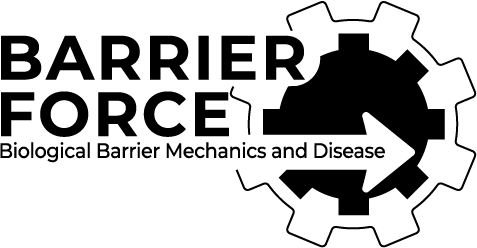In Vitro and In Silico Studies of Functionalized Polyurethane Surfaces toward Understanding Biologically Relevant Interactions
Paulina Chytrosz-Wrobel, Monika Golda-Cepa, Kamil Drozdz, Jakub Rysz, Piotr Kubisiak, Waldemar Kulig, Monika Brzychczy-Wloch, Lukasz Cwiklik, Andrzej Kotarba
ACS Biomater Sci Eng. 2023
ABSTRACT
The solid-aqueous boundary formed upon biomaterial implantation provides a playground for most biochemical reactions and physiological processes involved in implant-host interactions. Therefore, for biomaterial development, optimization, and application, it is essential to understand the biomaterial-water interface in depth. In this study, oxygen plasma-functionalized polyurethane surfaces that can be
successfully utilized in contact with the tissue of the respiratory system were prepared and investigated. Through experiments, the influence of plasma treatment on the physicochemical properties of polyurethane was investigated by atomic force microscopy, attenuated total reflection infrared spectroscopy, differential thermal analysis, X-ray photoelectron spectroscopy, secondary ion mass spectrometry, and contact angle measurements, supplemented with biological tests using the A549 cell line and two bacteria strains (Staphylococcus aureus and Pseudomonas aeruginosa). The molecular interpretation of the experimental findings was achieved by molecular dynamics simulations employing newly developed, fully atomistic models of unmodified and plasma-functionalized polyurethane materials to characterize the polyurethane-water interfaces at the nanoscale in detail. The experimentally obtained polar and dispersive surface free energies were consistent with the calculated free energies, verifying the adequacy of the developed models. A 20% substitution of the polymeric chain termini by their oxidized variants was observed in the experimentally obtained plasma-modified polyurethane surface, indicating the surface saturation with oxygen-containing functional groups.
